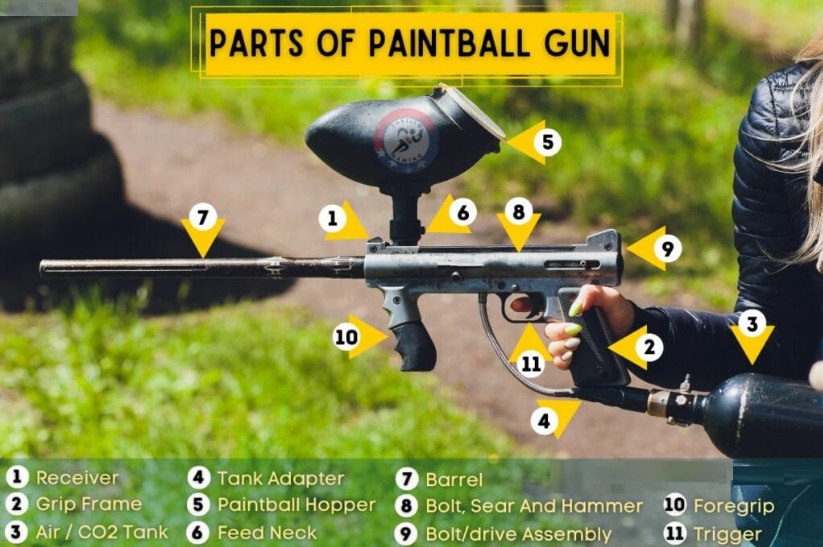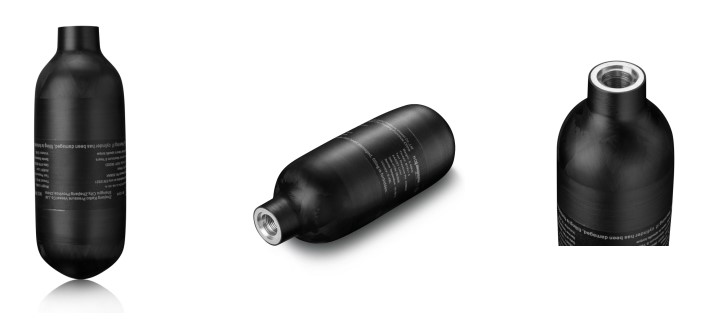Paintball is a popular sport that combines strategy, teamwork, and adrenaline, making it a favorite pastime for many. A key component of paintball is the paintball gun, or marker, which uses gas to propel paintballs toward targets. Two common gases used in paintball markers are CO2 (carbon dioxide) and compressed air. Both have their advantages and limitations, and they can often be used interchangeably in many paintball markers, depending on the setup and design of the equipment. This article will explain whether paintball guns can use both CO2 and compressed air, focusing on the role of carbon fiber composite cylinders in compressed air systems.
CO2 in Paintball
CO2 has been a traditional choice for powering paintball guns for many years. It’s widely available, relatively inexpensive, and works well in many environments. CO2 is stored in liquid form within the tank, and when released, it expands into a gas, providing the necessary force to propel the paintball.
Advantages of CO2:
1.Affordability: CO2 tanks and refills are usually less expensive than compressed air systems, making them an accessible choice for beginners and casual players.
2.Availability: CO2 refills can be found at most paintball fields, sporting goods stores, and even some large retail stores, making it easy to maintain a steady supply.
3.Versatility: Many paintball markers are designed to operate with CO2, making it a common and versatile option.
Limitations of CO2:
1.Temperature Sensitivity: CO2 is highly sensitive to temperature changes. In cold weather, CO2 doesn’t expand as efficiently, which can lead to inconsistent pressure and performance issues.
2.Freeze-Up: When fired rapidly, CO2 can cause the gun to freeze up because the liquid CO2 is turning into gas, rapidly cooling the marker. This can affect the performance and even damage the internals of the gun.
3.Inconsistent Pressure: CO2 can fluctuate in pressure as it converts from liquid to gas, leading to inconsistent shot velocities.
Compressed Air in Paintball
Compressed air, often referred to as HPA (High-Pressure Air), is another popular option for powering paintball guns. Unlike CO2, compressed air is stored as a gas, which allows it to deliver more consistent pressure, regardless of temperature.
Advantages of Compressed Air:
1.Consistency: Compressed air provides more consistent pressure, which translates to more reliable shot velocities and better accuracy on the field.
2.Temperature Stability: Compressed air is not affected by temperature changes in the same way that CO2 is, making it ideal for all-weather play.
3.No Freeze-Up: Since compressed air is stored as a gas, it doesn’t cause the freeze-up issues associated with CO2, leading to more reliable performance in high rates of fire.
Limitations of Compressed Air:
1.Cost: Compressed air systems tend to be more expensive than CO2 systems, both in terms of initial setup and refills.
2.Availability: Compressed air refills may not be as readily available as CO2, depending on your location. Some paintball fields offer compressed air, but you may need to find a specialized shop for refills.
3.Equipment Requirements: Not all paintball markers are compatible with compressed air out of the box. Some may require modifications or specific regulators to use compressed air safely.
Carbon Fiber Composite Cylinders in Compressed Air Systems
One of the key components of a compressed air system is the tank that stores the air. Traditional tanks were made from steel or aluminum, but modern paintball players often opt for carbon fiber composite cylinders. These tanks offer several advantages that make them ideal for use in paintball.
Why Carbon Fiber Composite Cylinders?
1.Lightweight: Carbon fiber composite cylinders are significantly lighter than steel or aluminum tanks, making them easier to carry on the field. This is especially important for players who prioritize mobility and speed.
2.High Pressure: Carbon fiber tanks can safely store air at much higher pressures, often up to 4,500 psi (pounds per square inch), compared to the 3,000 psi limit of aluminum tanks. This allows players to carry more shots per fill, which can be a game-changer during long matches.
3.Durability: Carbon fiber is incredibly strong and durable, which means these tanks can withstand the rigors of the paintball field. They are also resistant to corrosion, which extends their lifespan compared to metal tanks.
4.Compact Size: Because carbon fiber cylinders can hold air at higher pressures, they can be smaller in size while still offering the same or more shots than a larger aluminum tank. This makes them more comfortable to use and easier to maneuver with.
Maintenance and Safety of Carbon Fiber Cylinders Just like any high-pressure equipment, carbon fiber composite cylinders require regular maintenance to ensure they remain safe and effective. This includes:
-Regular Inspections: Checking for any signs of damage, such as cracks or dents, that could compromise the tank’s integrity.
-Hydrostatic Testing: Most carbon fiber cylinders are required to undergo hydrostatic testing every 3 to 5 years to ensure they can still safely hold high-pressure air.
-Proper Storage: Storing the tanks in a cool, dry place away from direct sunlight and sharp objects helps to preserve their longevity.
Can Paintball Guns Use Both CO2 and Compressed Air?
Many modern paintball guns are designed to be compatible with both CO2 and compressed air. However, it’s important to note that not all markers are capable of switching between the two gases without adjustments or modifications. Some older or more basic models may be optimized for CO2 and might require specific regulators or parts to safely use compressed air.
When switching from CO2 to compressed air, it’s crucial to consult the manufacturer’s guidelines or speak with a professional to ensure that the marker can handle the different pressure and consistency characteristics of compressed air.
Conclusion
Both CO2 and compressed air have their place in the world of paintball, and many players use both depending on the circumstances. CO2 offers affordability and widespread availability, while compressed air provides consistency, temperature stability, and better performance, especially when paired with modern carbon fiber composite cylinders.
Understanding the benefits and limitations of each gas type, as well as the advantages of carbon fiber tanks, allows players to make informed decisions about their gear. Whether you choose CO2, compressed air, or both, the right setup will depend on your playing style, budget, and the specific requirements of your paintball marker.
Post time: Aug-14-2024


